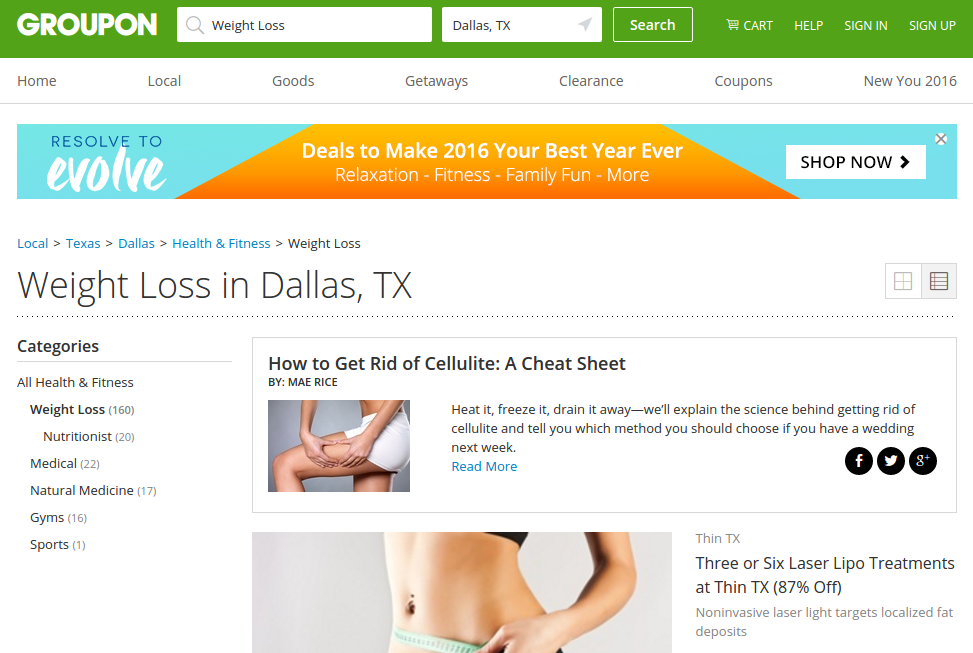Is Laser Hair Removal Right for You?


Laser hair removal is a great way to eliminate unwanted hair from your body. If you’re considering getting this type of treatment, here are some things to consider before committing to a procedure.
Cost
Laser hair removal is one of the most effective ways of removing unwanted hair. But, it can also be quite expensive.
Luckily, there are ways to lower the costs associated with laser hair removal. Most providers offer financing plans. .Some companies will offer discounts on multiple treatments. Others will give you a discount on a specific body area. Laser hair removal costs range from $100 to $800 per session.
For the best results, you may need a series of treatments. These are usually performed at four- to six-week intervals. A physician can suggest how many sessions you need.
The cost of laser hair removal Columbia, MD, can vary depending on your location. Large markets tend to have more competition, and prices will be higher.
Areas of the Body Treated
Laser hair removal is a great way to eliminate unwanted hair. Laser treatment is much safer than shaving, waxing, and plucking. Several places on the body can be treated with lasers. Some of these are your face, back, legs, and chest. You may need a few sessions to achieve your desired result.
The amount of treatments you’ll need is dependent on the size of the area you’re treating. For example, treating a man’s back can take about an hour. However, it’s important to remember that a larger area will likely take longer than a small area.
Most patients will need at least three to five treatments. A medical provider will develop a specific plan for your particular treatment. They will determine how many sessions you need based on the area you’re treating and how fast your hair grows.
Precautions
When using laser hair removal, it is important to follow all the precautions and safety guidelines. These can help reduce the risks of side effects and damage to the skin.
Before your treatment, the laser should be adjusted to the appropriate parameters for your skin type. You should also avoid using any topical products that may be photosensitive. If you have any medical conditions, you should inform your physician.
Your doctor will also discuss the possible side effects of the treatment. Some of them include temporary swelling, itching, and redness. However, these effects usually subside within a few days.
To reduce the risk of these side effects, it is recommended that you do not apply cosmetics or deodorants on the treated area for three days after the procedure. Also, you should apply a cool compress on the area.
Re-Treatments Every 4 to 6 Weeks
The number of laser hair removal treatments you need depends on many factors. Your skin and hair type, as well as your age, are some of the main factors.
Some laser systems work by targeting the follicles of hair. By destroying them, the growth cycle is interrupted. However, the process is temporary. Hair that grows back will be finer and weaker.
Some people have a regrowth cycle that requires treatments every four to six weeks. It is a good idea to consult your doctor before beginning any treatment. They will provide you with expert knowledge and support.
If you have dark skin, it is important to choose the right lasers. Darker tones are more sensitive to laser burns. In addition, your skin should be hydrated after the treatment.
Pregnancy
If you’re thinking about laser hair removal, it’s important to do your research. Pregnancy can make your skin more sensitive, and the risk of complications could be greater. In addition, hormonal changes during pregnancy can affect your hair growth, and the best time to have laser hair removal is after childbirth.
Most doctors recommend that pregnant women avoid lasers during the first trimester. However, it’s still possible to undergo laser treatments if you choose a certified technician who uses a safe technique.
The best time to have laser treatment is when your hormones have returned to normal, about six months after your birth. This is when your body will have adjusted to the changes, and your hair will grow back to its natural pattern.
The Most Effective Way in Sustainable Manufacturing Practices

 The most efficient way to implement sustainable manufacturing practices is to examine all manufacturing processes from a sustainable point of view. This requires gathering experts from various departments and identifying non-value-adding steps. It also involves identifying relationships among personnel in a company. One way to improve manufacturing processes is to use low-friction raw materials, which reduce the strain on manufacturing tools and procedures. Other sustainable measures include making repairs less likely and extending the lifespan of specific instruments and tools.
The most efficient way to implement sustainable manufacturing practices is to examine all manufacturing processes from a sustainable point of view. This requires gathering experts from various departments and identifying non-value-adding steps. It also involves identifying relationships among personnel in a company. One way to improve manufacturing processes is to use low-friction raw materials, which reduce the strain on manufacturing tools and procedures. Other sustainable measures include making repairs less likely and extending the lifespan of specific instruments and tools.
Reducing wastage
One of the essential steps in sustainable manufacturing practices is reducing waste. Waste production is inevitable, but reducing waste can help you minimize your carbon footprint. The first step is to sort your waste streams correctly. A waste management system can be a powerful tool to reduce the amount of waste you produce.
Sustainable manufacturing practices reduce waste by using less energy and water. Many manufacturing processes create heat, and this heat is wasted. Manufacturers can capture this energy and reuse it to improve efficiency. By reusing heat energy, they can reduce wastage and cut costs.
Recycling
Recycling is a process that turns waste materials into new products that benefit the environment and community. It comprises three steps: collecting the waste, sorting it into raw materials, and selling it. The prices of recycled materials fluctuate depending on supply and demand in the United States and worldwide. After recycling, the materials can be reused in different ways.
Recycling is one of the essential green manufacturing practices. It allows companies to reduce their waste, lower costs, and have a positive impact on the environment. In addition to recycling, companies should also use equipment that reuses resources and reduce their use of materials that are unfriendly to the environment. Recycling should be essential to an organization’s branding strategy as consumers increasingly turn toward eco-friendly practices.
Circular supply chains
Circular supply chains encourage the reuse of materials. This model is more efficient than the traditional “take, make, dispose of” paradigm. Reducing the number of materials that are thrown away or taken from landfills, this process can save companies money. In addition, it can also help to increase customer satisfaction.
Circular supply chains are far from a reality today. The UK alone recycles only 9% of plastic, and the recycling rate has stagnated since 2017. More concerning, a high percentage of collected materials is still being incinerated. Circular supply chains will not be widely adopted in the foreseeable future.
Circular supply chains can be particularly beneficial for manufacturers, who can reduce their overall costs while reducing their environmental impact. By adopting a circular process, they can save money using locally-available materials. For example, recycled aluminum is widely used in manufacturing. Since it is readily recyclable, its recycling costs are lower than those of imported materials.
IOT
Industrial processes rely on physical assets, which are often expensive and inefficient. When equipment breaks down or malfunctions, it wastes energy and creates an environmental impact. IoT devices can help mitigate these problems by collecting and analyzing data from sensors throughout the process. This data can be used to anticipate issues and extend the lifespan of equipment and machinery.
IoT can also help reduce operational costs, machine downtime, and energy consumption. Additionally, innovative connected products and services can help shift the sales model from product production to post-sale service. For example, Harley-Davidson recently reconfigured its manufacturing facility in York, PA, and reduced the production time for motorbikes from 21 days to six hours. This can reduce the product cycle time by up to 50%.
Digital twins
Digital twins can be used to simulate complex tasks and identify potential improvements. Using this tool, an engineering team can affect a product’s production or process using sensors’ data. These sensors can measure operational performance criteria, environmental data, and human safety. The simulations can improve the physical product or function and collaboration between the design and manufacturing ecosystems.
Digital twins can simplify the process of modeling and creating a product while simultaneously facilitating the implementation of a process. They also provide an efficient and transparent channel for information identification and exchange. To make this possible, digital twins must have a data structure that allows them to be exchanged quickly.
Preparing For Your Trip to The Cayman Islands: Ultimate Guide

 You need to know several things before you visit the Cayman Islands. These include the Entry Requirements, the Weather, and the Accommodations. It is also essential to know the local currency. Read on to learn more. Then you’ll be ready to book your trip!
You need to know several things before you visit the Cayman Islands. These include the Entry Requirements, the Weather, and the Accommodations. It is also essential to know the local currency. Read on to learn more. Then you’ll be ready to book your trip!
Visiting The Cayman Islands
Visiting the Cayman Islands will be the perfect vacation if you love beaches. This British Overseas Territory consists of three islands in the western Caribbean Sea. The Grand Cayman Brac is known for its beaches and deep-sea fishing excursions, while Little Cayman is home to seabirds, including red-footed boobies and endangered iguanas.
A visitor can stay up to six months in the Cayman Islands, though extensions are rare. The first extension is CI$50; each subsequent extension costs CI$100. The longer you stay, the more you’ll pay, but you can save on the fees if you plan ahead. Visit sites like https://www.visitcaymanislands.com/ can help you with planning.
Entry Requirements
Visitors must submit valid documents to prove their identity and nationality to enter the Cayman Islands. The document should also indicate where the visitor has a permanent address. A photo identification and certified birth or naturalization certificate are acceptable forms of proof. Visitors from certain countries may also need to apply for a visa to enter the Cayman Islands.
Visiting the Cayman Islands requires some preparation, including taking a TB test. There are also certain restrictions regarding the entry of certain types of food. Bring enough cash to cover unforeseen costs you may incur while visiting the island. Visitors also need a return ticket to the island and documentation showing they have the money to pay for the trip.
Weather
The Cayman Islands’ climate is characterized by seasonal variation, with the wettest months being December and April. The winter months are also characterized by rain and snow, and cold fronts are the central systems that bring precipitation to the Cayman Islands. However, the rain and snow are not as heavy and long-lasting as summertime rainfall. In addition, the more vital cold fronts often bring strong winds and rough seas. These are often referred to locally as “Northwesters.”
There are two distinct seasons in the Cayman Islands, with the wetter season lasting from May to November. This also coincides with hurricane season in the Atlantic. However, the rainfall is brief and refreshing, limiting its impact on holiday plans. In addition, the rainy season is also the best time to visit the Cayman Islands, as room rates are lower and the beaches are less crowded.
Accommodations
If you are thinking of renting a place to stay in the Cayman Islands, there are several types of accommodations that suit a variety of budgets. These include studio apartments, one-bedroom, and five-bedroom homes, with most featuring air conditioning. There are also affordable beachfront accommodations available in West Bay and Spotts Newlands.
Located 90 miles south of Cuba, the Cayman Islands are a paradise for water sports enthusiasts and those who enjoy relaxing on the beach. In addition to beautiful beaches and diving spots, the Cayman Islands also boast a fascinating cultural heritage. For foodies, there are a variety of restaurants and bars, and many of the island’s accommodations are located directly on the beach.
If you are looking for luxury accommodations, consider one of the island’s hotels. The nation’s botanical gardens, the national museum, and some of the island’s most opulent resorts are all in Grand Cayman.
Tipping
Tipping in the Cayman Islands is considered a normal part of doing business. The average tip is between two and five dollars, depending on service level and friendliness. Bellboys, porters, and maids are usually tipped around $1 to $2 per bag, depending on the service.
Although most places in the Cayman Islands accept credit cards from US banks, you should always tip at restaurants. While it is not mandatory, most restaurants and hotels recommend that you tip between 15 and 20%. The standard is 15-20%, but it is customary to leave a tip if satisfied with the service.
It is important to remember to tip in the Cayman Islands because the locals are known for being respectful. Even though the country is influenced by British culture, the islanders still follow their traditions when greeting people. Try to say “please” and “thank you” when paying for services and always greet the authorities with a warm smile. In addition, it is a good idea to learn some of the primary languages to communicate effectively.
Pregnancy Supplements: What to Take and Not to Take


Supplements are not only good for a woman’s health, but they’re also a great way to keep up with dietary recommendations and minimize pregnancy risks. For example, nutritional supplements are a great way to avoid consuming high-mercury seafood and alcohol, and cigarettes. Plus, some of these supplements can even improve your maternal outcomes.
Vitamin D
Vitamin D is essential for healthy bone development and absorption. Vitamin D is also necessary for preventing pregnancy complications, including pre-eclampsia. However, knowing how much vitamin D during your pregnancy is good for you is essential. A daily allowance of 4,000 IU may be enough. Consider taking a supplement if you’re not getting enough vitamin D through food or sunlight.
However, excessive supplementation of vitamin D can cause toxicity. Too much vitamin D can lead to hypercalcemia, an accumulation of calcium in the blood. This can be harmful to both the mother and fetus. To avoid toxicity, doctors recommend taking at least 2,000 IU of vitamin D daily. Higher doses may be recommended for short periods in the third trimester, but pregnant women should monitor their calcium levels.
Folic Acid
Pregnant women should take folic acid supplements if they’d like to reduce the risk of neural tube defects, which are problems that result from the lack of folic acid. These defects can result in the baby being born with a spinal cord that doesn’t close properly. Some examples include spina bifida, where part of the baby’s spinal cord remains outside the body, resulting in paralysis of the legs and bladder control issues. In extreme cases, the baby can die. Additionally, folic acid may help prevent some types of heart disease, as well as some cancers.
Folic acid helps form the neural tube of a developing baby, which is essential to developing the baby’s brain and spine. It also helps prevent neural tube defects and congenital disabilities during early pregnancy. This is why the CDC recommends folic acid for pregnant women. Studies have shown that folic acid can reduce the risk of neural tube defects by 50 to 70%. Therefore, taking folic acid supplements daily is vital to protect your unborn child’s future.
Calcium
Calcium supplements during pregnancy are safe, and some women may benefit from them. Studies show that calcium can reduce the risk of pre-eclampsia and other pregnancy complications. Preterm birth, one of the leading causes of infant mortality in low-income countries, can also be reduced with calcium supplementation.
In one study, calcium and antioxidant supplementation decreased the risk of pre-eclampsia in pregnant women. It did not, however, reduce the number of miscarriages. In addition, calcium supplements had no significant effect on platelet counts, uric acid, or urinary protein.
Black Cohosh
Black cohosh is a North American plant commonly used to treat gynecologic disorders. The plant is sometimes taken as a supplement to alleviate menopausal symptoms such as hot flushes and cramps. Native Americans also use it to treat other ailments such as musculoskeletal pain, cough, and pneumonia. Native Americans and European settlers have used it for centuries.
Black cohosh supplements should be used responsibly and with caution. Research indicates that high doses may trigger side effects. Some people report abdominal pain, headaches, or joint pains after high doses. Others experience dizziness, tremors, and visual dimness.
Nonprescription Cold And Cough Medicines
When taking over-the-counter cough and cold medicines during pregnancy, you should carefully read the label to ensure that no ingredients are dangerous to the developing fetus. Certain elements are unsafe to use in pregnancy, including guaifenesin, which may be present in some cough medicines. A lower dose should be used for shorter periods, and there are several other precautions that you should take.
The first thing you should know about nonprescription cough and cold medicines is that many contain more than one medication. Some of these combination medicines have drugs that are unsafe to take during pregnancy, such as loratadine and pseudoephedrine. Before beginning any combination product, always consult with your healthcare provider. Depending on your circumstances, some of these medicines are safe for pregnancy, while others may cause harm to you and your unborn baby. Talk to your doctor or pharmacist about what is safe to take for the best results. The best way to stay healthy during pregnancy is to use the lowest possible dose for the shortest amount of time.
Vitamin C
Knowing how much Vitamin C to take during your pregnancy is essential. Taking high doses of the vitamin can be dangerous. The US Food and Nutrition Board, part of the National Academy of Sciences and the Institute of Medicine, recommends that pregnant women take no more than 80 milligrams of vitamin C daily. The recommended upper limit for vitamin C is 2,000 mg for women aged 19 and over and 1,800 mg for women younger than 19. Pregnant women should not exceed these amounts as it can cause fetal harm, congenital disabilities, and rickets.
In one study, supplementation with vitamin C during pregnancy did not reduce the risk of stillbirth or other pregnancy complications, such as perinatal death and preterm birth. However, it did reduce the risk of placental abruption and pre-labor rupture of membranes. However, further research is needed to determine if vitamin C can reduce the risk of these conditions or prevent them.
Things to Consider Before Getting a Free Phone Service


Several factors to consider before you sign up for a free phone service. These include the contract status of the company, whether the service comes with malware preinstalled, and the price of the plan. You should also find out whether the service comes with a free business phone number.
The contract status of the company you’re interested in
Before you get free phone service, you must understand the contract status of the company you’re interested in. If you’re a military member, you should ask about the contract status and see if it’s transferable. You should consider transferring your contract to a family member if it isn’t. This will help avoid early termination fees.
Preinstalled malware on free phone service
If you have a free phone service plan, you may have preinstalled malware on your phone. According to an investigation, free phones sold through the Lifeline Assistance program include a wide range of malware. The malware can be difficult to remove and cannot be removed without disabling the phone. The government must do its due diligence in choosing these phones and has instead chosen the cheapest option. This is a good way for attackers to make money and steal information. To stop the malware from infecting your free phone, you must first uninstall the Wireless Update app, which is designed to update your phone automatically. It also installs new applications without your consent. Another app on the phone is the Settings application, similar to a Trojan dropper. The Settings app is a dashboard that manages the phone.
Cost of the plan
If you need to make phone calls, you can take advantage of Lifeline, a government program that subsidizes the cost of telephone and internet services for low-income Americans. The program was established during the Reagan administration and allowed low-income residents to access these services for free or at a discounted rate. In 2016, the program expanded to include data services, as well. It is available in all 50 states and all US territories, including tribal lands.
Availability of a free business phone number
Obtaining a free business phone number is an excellent way to reduce the costs of running a business and can help you to separate your work calls from personal ones. Whether you are a small-scale local business or a large corporation, a dedicated business phone number is an essential part of establishing credibility. Although it is possible to use a toll-free business number for your company, it may be best to use a local phone number. Local numbers will give you credibility in the local area and establish a solid reputation within the community. However, once you expand your business to a national level, you can move to a toll-free number. A vanity phone number is also a great way to market your business. Another benefit of a free business phone number is its flexibility. Some providers allow users to upgrade their free business phone numbers anytime. This gives you the flexibility to change your service when you need to and the freedom to choose your provider.








